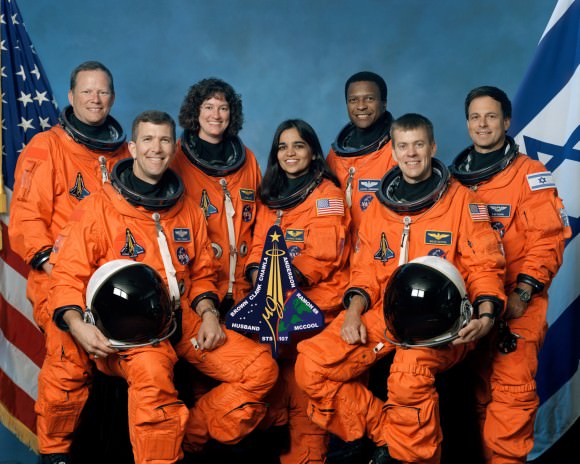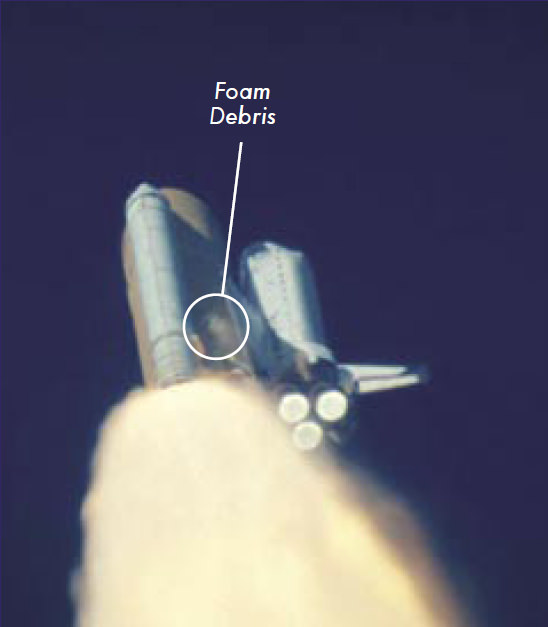The Columbia’s shuttle fiery end came as the STS-107 astronauts’ families were waiting runway-side for everyone to come home. NASA’s oldest space shuttle broke up around 9 a.m. Eastern (2 p.m. UTC) on Feb. 1, 2003, scattering debris along east Texas and nearby areas. Its demise was captured on several amateur video cameras, many of which were rebroadcast on news networks.
In the next four months, some 20,000 volunteers fanned out across the southwest United States to find pieces of the shuttle, coming up with 85,000 pieces (38% of the shuttle) as well as human remains. Meanwhile, investigators quickly zeroed in on a piece of foam that fell off of Columbia’s external tank and struck the wing. A seven-month inquiry known as the Columbia Accident Investigation Board eventually yielded that as the ultimate cause of the shuttle’s demise, although there were other factors as well.
The disaster killed seven people: Rick Husband, Willie McCool, Michael Anderson, Kalpana Chawla, David Brown, Laurel Clark and Ilan Ramon (who was Israel’s first astronaut.) At a time when most shuttles were focused on building the International Space Station, this crew’s mandate was different: to spend 24 hours a day doing research experiments. Some of the work was recoverable from the crew’s 16 days in space.
Columbia’s demise brought about several design changes in the external tank as NASA zeroed in on “the foam problem.” NASA put in a new procedure in orbit for astronauts to scan the shuttle’s belly for broken tiles using the robotic Canadarm and video cameras; shuttles also flew to the International Space Station in such a way so that astronauts on station could take pictures of the bottom.
Return-to-flight mission STS-114 in July-August 2005 yielded more foam loss than expected. Then NASA found something. For a long time, workers at the Michoud Assembly Facility were blamed for improper foam installation after partial tests on external tanks, but an X-ray analysis on an entire tank (done for reasons that are explained in this blog post from then-shuttle manager Wayne Hale) revealed it was actually due to “thermal cycles associated with filling the tank.”
“Discovery flew on July 4, 2006; no significant foam loss occurred. I consider that to be the real return to flight for the space shuttle,” he wrote. “So were we stupid? Yes. Can you learn from our mistake? I hope so.”



I would have thought that an inspection prior to re-entry would have been part of standard operating procedures from day one. Common sense would dictate that if you’re traveling in a *used* space craft, you’d be far more wary of the equipment and keep an eye the failure intolerant components.